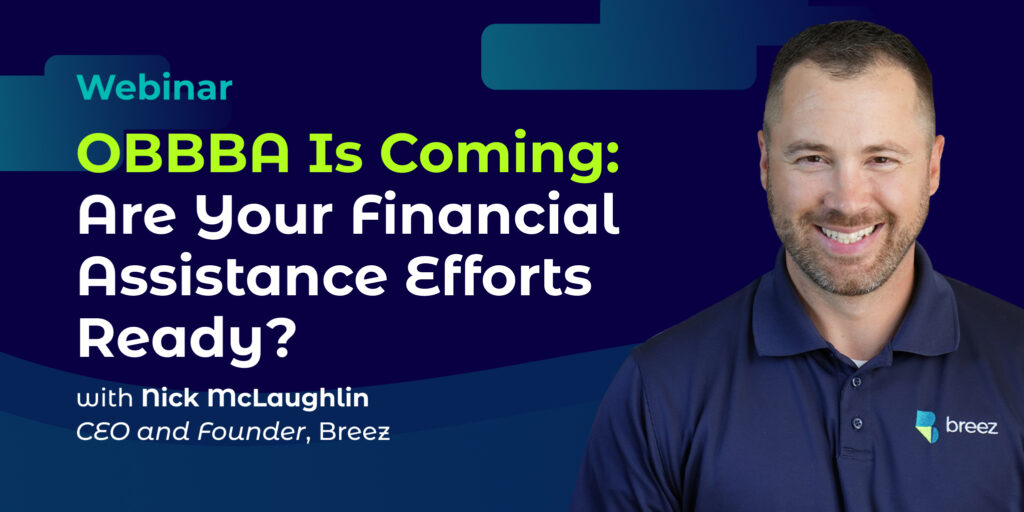We received America’s Report Card on the U.S. healthcare system and it’s not good. Consumers are not impressed. When it comes to healthcare in America—high marks are in short supply. The 2022 West Health-Gallup Report revealed that 44% of Americans give the U.S. healthcare system a poor or failing grade. The top two reasons? Affordability and accessibility.
This blog offers tips for raising the bar—and the grade—on affordable access to care by more effectively and efficiently using a powerful tool you already have at your disposal: your financial assistance program.
Healthcare affordability is becoming a larger issue at healthcare organizations
In a recent poll we conducted during our latest webinar, “Laws That Govern Financial Assistance in Healthcare,” we found that 82% of participants feel that affordability is becoming a larger issue at their hospital or health system.
Hospital Financial Assistance Programs (FAPs) are means-based discount programs that safeguard affordable access to necessary care for lower income patients. They are also a primary way nonprofit hospitals show their community benefit to justify a tax-exempt status. If FAPs are a win-win for hospitals, and the communities they serve, why aren’t they being used to their full potential? 1. Many patients don’t know they exist and 2. The FAP process can be a challenge for patients and hospital staff.
501(r)(4)—The bedrock on which nonprofit financial assistance policies are built
Let’s look at 501(r)(4) requirements and how hospitals can improve affordability and accessibility through four simple steps.
1. Eligibility criteria: 501(r) leaves it up to the hospital to set eligibility criteria. Your hospital’s FAP policy must specify the criteria an individual must satisfy to receive a discount. Any eligibility criteria you use to approve or deny financial assistance should be clearly identified and defined in your hospital’s FAP policy document.
Tip to improve affordability and accessibility #1: If you do require asset tests for eligibility—make them reasonable and clear. For example: “A patient is not eligible for financial assistance under this policy if the patient’s household has qualifying assets valued at $50,000 or more. Qualifying assets include checking or savings account balances, Health Savings Accounts, and equity in non-primary residence real estate.”
2. Methods for applying: Financial assistance policies must describe: 1. How to apply for financial assistance 2. What information is required on the application 3. What documentation is needed along with the application 4. How a patient can obtain an application.
Tip to improve affordability and accessibility #2: Too many hospitals still use clunky paper applications that require patients to pick up the phone, visit the hospital, or download and print a pdf to receive a copy. Instead of sending patients on a hunt for a paper form, consider offering a self-serve, quick and easy digital application to make things simple and more patient centered.
Tip to improve affordability and accessibility #3: Another tip involves documentation lists hospitals ask patients to provide in addition to their financial assistance application form. Typically, W-2s, proof of income and sometimes a Medicaid denial letter are relevant. Anything more than that—including mortgage statements, rent receipts, property tax bills or copies of utility bills—are just more work, paper pushing, and administrative burden for the patient and hospital staff as well. The shorter the application process, the better for everyone.
3. Widely publicized FAP: This part of 501(r) requires nonprofit hospitals to post financial assistance policy documents on the hospital’s website and make paper copies available upon request at no cost to patients. It also requires hospitals to “notify members of the community about the financial assistance policy in a manner reasonably calculated to reach those members of the community who are most likely to require financial assistance.”
Tip to improve affordability and accessibility #4: Proactively reach out to your communities to inform patients that your financial assistance program is there to help make care affordable for them. The lack of community awareness is one of the reasons so many people are struggling with medical debt. How can we proactively promote financial assistance without adding significant cost and burden on hospital budgets and teams? Consider leveraging an FAP partner and outsourcing this task to optimize your program—and its reach. An effective FAP partner can help you develop a streamlined digital application, implement text message campaigns and other forms of patient outreach—all to bring awareness to your program.
A healthcare event in someone’s life should not affect their ability to afford healthy food, fill prescriptions, or keep the lights on. It’s imperative that we—as an industry—do what we can to make healthcare more affordable. Streamlined financial assistance programs can help. When we make applying for assistance easy for patients—we can raise America’s healthcare grade—and the affordability and accessibility of care for those that need it.



